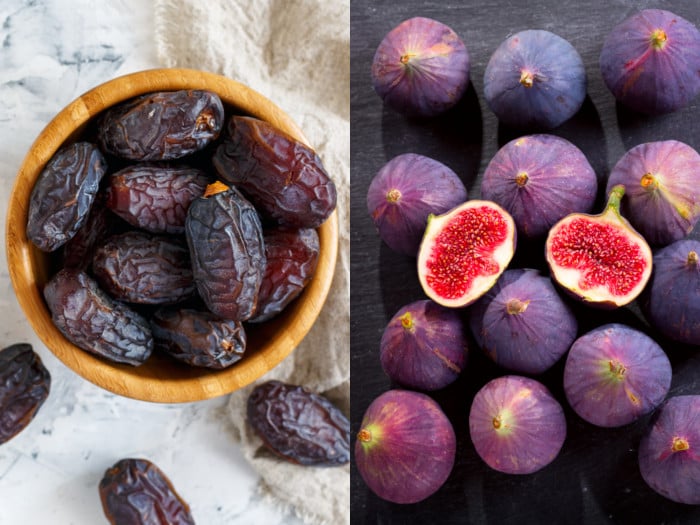Many people seem confused by the difference of figs vs dates, and while they may have a similar appearance, several notable details separate these two fruits.
Figs vs Dates
Although they are often and easily mixed up, figs and dates are different fruits with distinct nutritional profiles and health benefits.
Figs
Figs are not actually fruits but are instead “inverted flowers, which may explain the unusual consistency when you eat them. These small fruits grow on fig trees, and while there are hundreds of different fig trees, these fruits are typically cultivated from a single species, Ficus carica. These fruits have grown in the Mediterranean and European region for thousands of years, and have played important cultural, culinary, and medicinal purposes throughout history. The fruits are small with purple exteriors, while the interior has a grainy red flesh that can be eaten or used in various recipes. [1]
Figs have a moderate concentration of magnesium, calcium, and iron, as well as potassium, dietary fiber, amino acids, and various beneficial fatty acids. Figs are low in sugar, at 12-13 grams per weight, while the same amount of dates are high in sugar, at around 28 grams. This fruit is known to affect the digestive system, cardiovascular health, metabolic activity, and lower cholesterol levels. These fruits are often dried, but they are also very delicious when eaten fresh, despite the unusual consistency. [2]

Figs vs dates Photo Credit: Shutterstock
Dates
These are the fruits of the date palm, which bears the scientific name Phoenix dactylifera. [3]Dates are sticky, cylindrical fruits with a chewy consistency and a very high fructose content, meaning that they should always be eaten in moderation. These brownish-red fruits have been popular in certain regions for thousands of years, most notably the Middle East. There are many different types of dates, the most popular being Medjool Dates and Deglet Noor. For more information, you can head over to 9 Types Of Dates You Didn’t Know About.
These fruits can be eaten either dried or fresh, but dates are most commonly found in their dried form, as they have a very long shelf life and can retain their flavor for months, or even years! According to USDA, dates are rich in potassium and dietary fiber, as well as magnesium and calcium, and can help with digestion, immune health, and blood pressure issues. [4] [5]
